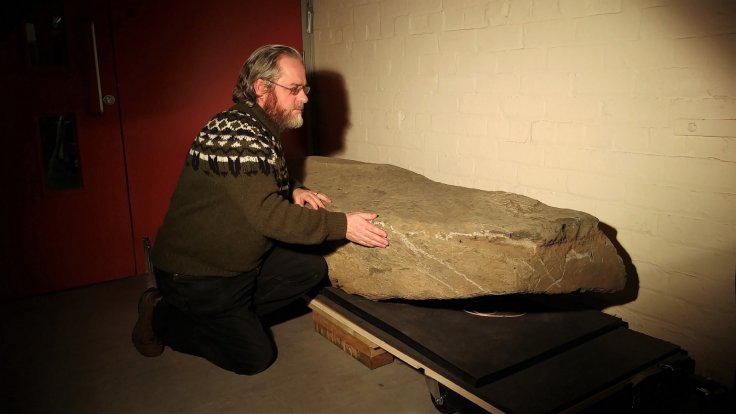During ground clearance work for the A9 and A85 in Perth, workers found a Pictish stone, almost two metres tall, which helped the archaeologists to identify Scotland's ancient warriors. After analysis of the Pictish stone, researchers found that the monolith depicts a male figure carrying a spear. It took months to analyse the images of the stone and then they understood that it could be a sacred icon from a "cemetery of the elite" in Pictish times.
Research on Pictish stone

As per the recently published study in the journal Antiquity, The researchers who carried out the analysis on the stone said that the significant finding, named as Tulloch Stone, could indicate the existence of an ancient society led by warriors. It should be mentioned that the stone was found in 2017, but at that time the figures were not clear and the surface was damaged.
University of Aberdeen archaeologists created 3D images from thousands of stone photographs to get a clear idea about ancient warriors. The head archaeologist of the university, Professor Gordon Noble stated that on the Tulloch Stone, now the researchers can see a man is carrying a distinctive doorknob-butted spear. He mentioned that as per the previous research, it was revealed that the spear was in use for the third to the sixth century.
Professor Noble added that the man in the monolith also has a very distinctive hairstyle, who is wearing a helmet as well as a necklace. The researchers also noticed that the man has a faint line around the left ankle which could suggest footwear or tight leggings.
"Its findspot overlooks the coming together of the rivers Tay and Almond, a junction marked by a Roman fort and later a possible Pictish royal centre, suggesting the monolith might have been located in a cemetery of the elite. Because the presentation of the figures is standardised across all of the stones, it is likely that it represents a generic sacred image, rather than it being a depiction of someone buried there," said Professor Noble.

The weapon-bearing ancient male
The professor stated that now they believe that the weapon-bearing individuals shown on these stones may represent a war-oriented social organization which was essential to resist the Roman Empire and to create the overtly hierarchical societies of the post-Roman period.
Archaeological curator at Perth Museum, Mark Hall praised the recent findings and stated that the "workmen who scooped up this stone did well to realise that there was something on it" and then alerted appropriate authorities. He also mentioned that the finding suggested the existence of a warlord or warrior community for which few pieces of evidence were found in Scotland.
In addition, he said that in Anglo-Saxon England, there are lots of examples of burials with weaponry which indicate towards the warrior ethos of this period. But thanks to the new Tulloch find and a "Reconsideration of long-known stones we can see that warrior ideology cast in stone - meaning these martial values were conveyed in a very public way to be visible in the landscape and to invoke supernatural protection."
The ancient warriors
There have been a few civilizations, tribes and factions which had accepted warfare as an intrinsic part of their culture. While discussing ancient warriors, it is required to mention those greatest ancient warrior cultures before Common Era.









